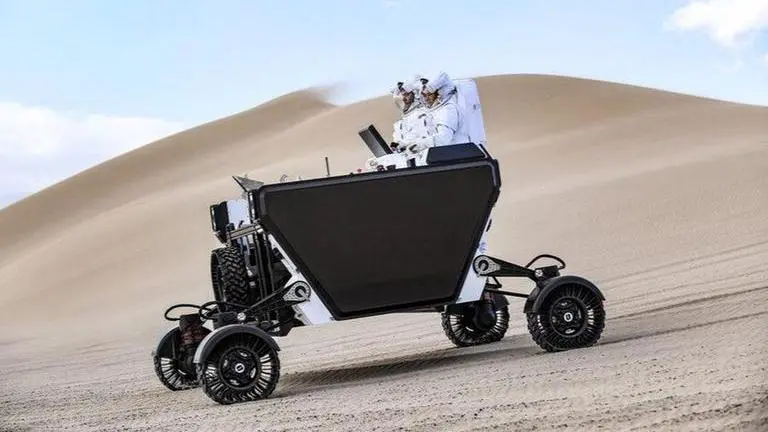Updated 11 March 2022 at 16:10 IST
Venturi Astrolab introduces new rover to carry crew and cargo on Moon & eventually Mars
Venturi Astrolab founder Jaret Matthews revealed that the rover weighs about 500 kg and will be equipped with technologies designed for the lunar terrain.
- Science News
- 2 min read

California-based aerospace startup Venturi Astrolab has revealed a prototype model of its brand new rover for usage on the Moon. Named Flexible Logistics and Exploration (FLEX) the rover, as the company says, is being designed to support human operations, robotic science, exploration, logistics, construction and resource utilization. Astrolab says that this specialty of the rover would enable humans to make a sustained presence on the lunar surface and even on Mars.
Astrolab aims to create “the most versatile rover ever created”
Speaking at an interview, Jaret Matthews, Astrolab’s founder and CEO, said as per Space News, “We’re making FLEX to be the most versatile rover ever created, and the primary innovation is the fact that we have this modular payload capability”. The rover can carry a payload of up to 1,500 kilograms, above or below its main deck, and can be controlled either by two astronauts onboard or a remote.
In a video shared by the company, a pair of rovers can be seen transporting cargo across the lunar base after landing in a SpaceX Starship rocket. Stating "we want to solve local transportation problem", Matthews has said that one of FLEX's aims is to be ready for service when SpaceX and Blue Origin would touch down on the Moon on their own cargo landers. Speaking with The Verge, Matthews said, "Companies like SpaceX and Blue Origin are solving the long haul transportation problem, and we want to solve the local transportation problem, and ultimately set the standard for lunar logistics".
The CEO revealed that when the rover is ready, it would weigh about 500 kilograms and will be equipped with technologies specifically designed to operate in the lunar terrain. "We want the hardware to be super robust so that they can essentially drive it like they stole it and not have to worry about it", Matthews told The Verge. The company is also working to make the rover withstand the extreme environment on the Moon. FLEX would be made resistant to radiation and to temperatures that can drop as low as -130 degrees Celsius when the lunar south pole plunges into darkness for 14 days. According to the company, the FLEX rover would be delivered to the Moon before NASA's Artemis 3 mission, which is targeted no earlier than 2025.
Advertisement
Image: Venturi Astrolab
Published By : Harsh Vardhan
Published On: 11 March 2022 at 16:10 IST
